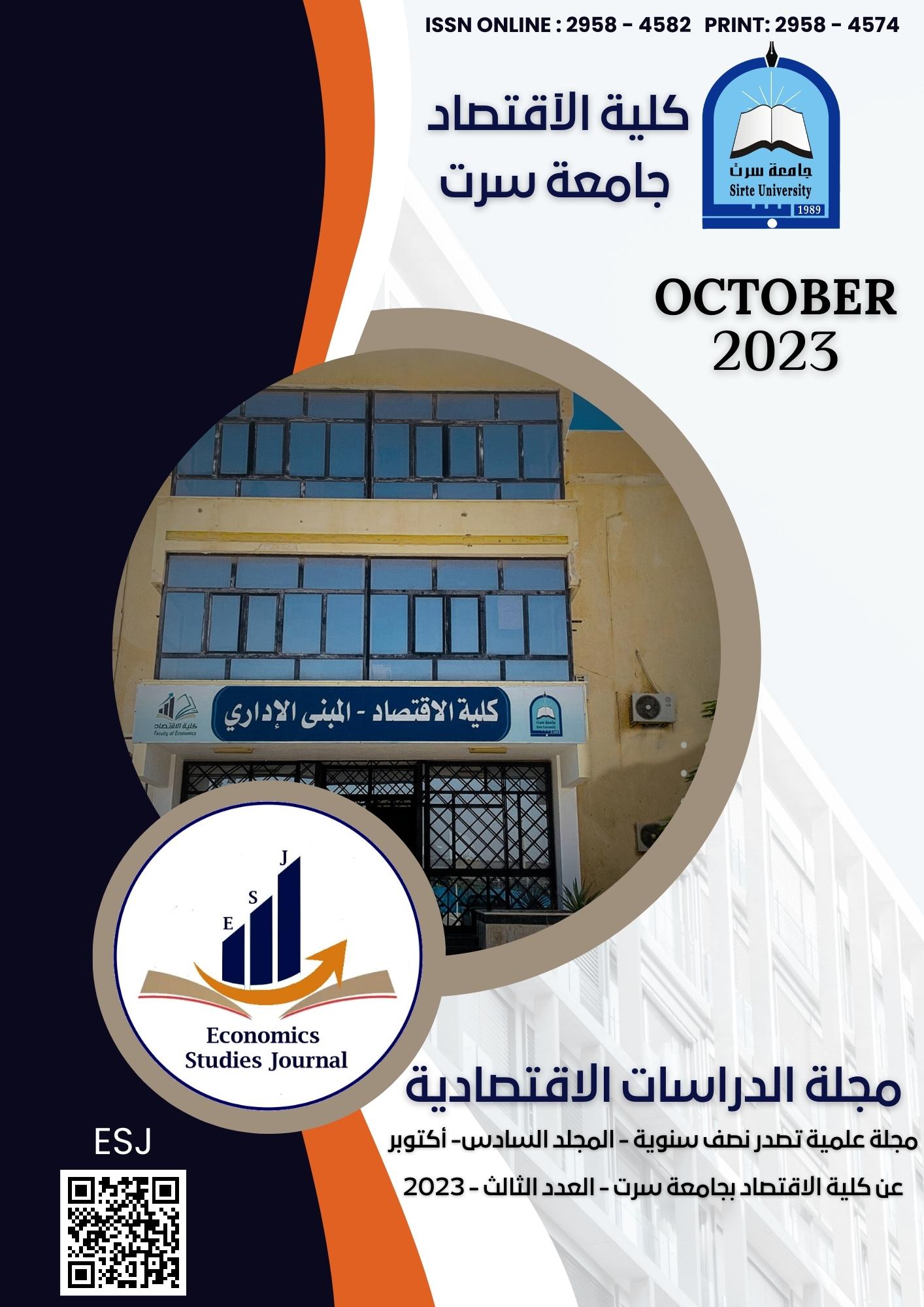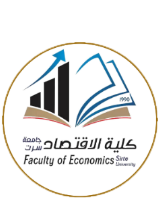Human Resource Management Strategies to keep pace with technological change: An Applied Study on Libyan Manufacturing Companies
Keywords:
Human resource management, Human resource management strategies, Technological change, Libyan manufacturing companiesAbstract
This study aims to identify the strategies practiced by the human resources management in the Libyan manufacturing companies to keep pace with the recent changes in technology, and also to identify the method in which the process of providing training (training methods, training providers, training duration, training evaluation methods) to deal with these technological changes. The study population consisted of all manufacturing companies registered in the Libyan Ministry of Industry, which constitute a total of (110) large, medium and small manufacturing company. The results of the study indicate that the most used strategies that have been applied by those responsible for human resources management in the companies under study are new job description and now job design, as strategies used to keep pace with the introduction of new technology in these companies. The study showed that among the training methods used because of the introduction of new technology did the manufacturing companies under study to deal with technological changes as they happen use On-the-job training. The results of the study also revealed that there are statistic significant differences between the companies in terms of their size, when they use of-the-job training mothed as well as in terms of the nature of the training providers, as well as in terms of the training evaluation methods used by the companies under study, and also indicated that there are no significant differences statistics on the training duration, in terms of the size of the companies. The study recommended that more attention to human resources management to ensure achieving the highest possible level of performance for the companies under study, which reflected in providing quality services to clients.
References
قائمة المرجع
أولا: الكتب والمقالات العربية:
- التمياط، حواس مشل.(2007) أثر استخدام تكنولوجيا المعلومات على فاعلية إدارة الموارد البشرية في المملكة العربية السعودية، رسالة ماجستير غير منشورة، عمان، الجامعة الأردنية.
- الخفرة، محمد، عبدالرحمن.( 2005 ) أثر استخدام تكنولوجيا المعلومات على فاعلية القرارات الإدارية في الوزارات في المملكة العربية السعودية، رسالة ماجستير غير منشورة، كلية الدراسات العليا، الجامعة الأردنية.
- الظفيري، نواف .( 2010 أثر استخدام نظم المعلومات الإدارية على مستوى الأداء الوظيفي: دراسة تطبيقية على العاملين والموظفين في المؤسسات والدوائر الحكومية في المنطقة الشرقية من المملكة العربية السعودية"، الكرك، جامعة مؤتة، رسالة ماجستير غير منشورة.
- المغربي، عبدالحميد (1999). الإدارة الاستراتيجية لمواجهة تحديات القرن الحادي والعشرين، مجموعة النيل العربية القاهرة، جمهورية مصر.
- اللوزي، موسى (2000). التنمية الإدارية: المفاهيم، الأسس، التطبيقات، دار وائل للنشر والتوزيع، عمان، الأردن.
- المرسى، جمال الدين (2003). الإدارة الاستراتيجية للموارد البشرية المدخل لتحقيق ميزة تنافسية لمنظمة القرن الحادي والعشرين، الدار الجامعية، الاسكندرية، جمهورية مصر.
- الأغبري، إبراهيم (2007) . دور تكنولوجيا المعلومات في إدارة الموارد البشرية: دراسة ميدانية في قطاع النفط والمعادن بالجمهورية اليمنية، رسالة ماجستير غير منشورة، جامعة العلوم والتكنولوجيا، اليمن.
- بوهنة زينب، وبلهادي مريم (2013/2014)، إدارة الموارد البشرية في المؤسسة الاقتصادية، الجزائر: وزارة التعليم العالي والبحث العلميّ، صفحة 18-17. بتصرّف.
- جميل، عدنان عبد الكريم /النظرية التكنولوجية والتاريخ التكنولوجي / سلسلة الموسوعة الصغيرة (34) وزارة الأعلام – بغداد 19
- جون، وارنز وسيمون، راندي دي (2012). تنمية الموارد البشرية، ترجمة عبدالمحسن نعساني، الجزء الأول، النشر العلمي والمطابع- جامعة الملك سعود، الرياض، السعودية.
- حسونة، فيصل (2008). إدارة الموارد البشرية، دار أسامة للنشر والتوزيع، عمان، الأردن.
- عقيلي، عمر ووصفي على (2005). إدارة الموارد البشرية المعاصرة، بعد استراتيجي، دار وائل، عمان، الأردن.
- علي، مؤيد ومحمود على (2018). استراتيجية تنمية الموارد البشرية في المؤسسات الخدمية وعلاقتها باتجاهات العاملين نحوها " دارسة ميدانية لدى العاملين في مؤسسة الطيران العربية السورية في محافظة دمشق"، مجلة جامعة حماة، العدد التاسع، المجلد الأول.
- علوان، فالح حسن، ورقة نقاشية 15/08/2018، ملامح واتجاهات سياسة العلوم والتكنولوجيا في العراق وقائع جلسات الندوة العلمية الثانية لسياسات العلوم والتكنولوجيا في العراق- وزارة العلوم والتكنولوجيا، بغداد.
- علیش، محمد ماھر(1971). إدارة الموارد البشریة، مكتبة عین شمس، القاھرة، جمهورية مصر.
- رايس، مراد .( 2009 ) أثر تكنولوجيا المعلومات على أداء الموارد البشرية في القطاع العام البحريني، دورية الإدارة العامة، المجلد ( 35 )، العدد ( 1)، ص.167-
- سراج علي وهيبة مجد، (2012). استراتيجية تنمية الموارد البشرية كمدخل لتحسين الأداء المستدام في المؤسسة الاقتصادية، دراسة حالة شركة تصنيع اللواحق والصحية بعين الكبيرة سطيف، مذكرة ماجستير في إطار مدرسة الدكتوراه في علوم التسيير تخصص إدارة اعمال الاستراتيجية، كلية العلوم الاقتصادية والتجارة علوم التسيير، جامعة سطيف، الجزائر.
- شعبان، سعيد حامد .( 2005 )التحديات المعاصرة أمام الموارد البشرية العربية وسبل التغلب عليها، المجلة العلمية للبحوث والدراسات التجارية، كلية التجارة وإدارة الأعمال، جامعة حلوان، العدد ( 17 )، ص.(105)
- طاھر، جميل والعصفور، صالح(1996) . الدليل الموحد لمفاھیم ومصطلحات التخطيط في دول مجلس التعاون لدول الخلیج العربي، المعهد العربي للتخطيط الكویت، ص. 130
- مصطفى، أحمد سيد (1996). انعكاسات التكنولوجيا على العنصر البشرى في المنظمات العربية، مجلة أفاق اقتصادية، اتحاد الغرف التجارية والصناعية والزراعية للبلاد العربية، ص96-115.
- منصور، أحمد (1975). قراءات في تنمية الموارد البشریة، وكالة المطبوعات، الكویت، ص195.
ثانيا: الكتب والمقالات الاجنبية
- Ardichvili, A. and A. Gasparishvili (2001). "Human resource development in an industry in transition. " Human Resource Development International 4(1): 47- 63.
- Armstrong, Michael (2008). Strategic Human Resource Management, a guide to action, 4 the edition, British Library cataloguing.
- Armstrong, Michael (2009), "Human Resource Management Practice",10 th ed, Personnel Management- Hand Book, Cambridge University Press
- Anon (2006) Strategic human resource management and its significance to service organizations [online]. Available from: http://www.packet-one.com/docsp1/Thesis%201.pdf
- Babbie, E. (1998). Survey Research Methods (2nd ed.). California: Wadsworth Inc 17.
- Burke, R. and Cooper, C. (2000). The Organization in Crisis: Restructuring, Downsizing and Privatization, London: Blackwell.
- Certo, S. (1997). Modern Management (7th ed.). New Jersey: Prentice Hall.
- Dessler, G. (2008). Human Resource Management (11th edition), New Delhi, Prentice Hall, of India Private Ltd.
- Deb, T, (2003). Human Resource Development, Theory and practice, India: Ane Books
- Daft, R. (2004). Organization Theory and Design (8th ed.). UK: Thomson.
- David, Fred R. (2009). Strategic Management, 4th ed. Pearson – Prentice Hal.
- Edwin, B Flippo (1984) Personnel Management, New York McGraw Hill; 6th Edition, 1984.
- Huub Ruel, Tanya Bondarouk, Mandy Van Der Velde ,"the contribution of e-HRM to HRM effectiveness: Results from a quantitative study in Dutch Ministry", employee relation, Vol(29),Issue(3),pp 280-291, 2007.
- Haddad, C. J. (2002). Managing Technological Change. Thousand Oaks, CA: Sage.
- Holm, Justin Tor, (2003) Information Technology Strategy and Business Performance: A Study Of Industry And Company Size, Concordia University (Canada). www.lib-umi.com/dissertational.
- Iles, P. and M. Yolles (2003). Complexity, HRD and organization development Towards a viable systems approach to learning, development and change in Lee, M. HRD in a Complex World. London. New York, Routledge.
- Inyang، Benjamin James (2010)." Strategic Human Resource Management (SHRM): A Paradigm Shift for Achieving Sustained Competitive Advantage in Organization", International Bulletin of Business Administration, © Euro Journals, Inc.
- Lee, M. (2003). HRD in a Complex World. London, Routledge
- Low, L. (1998). "Human Resource Development in the Asia-Pacific. " Asian-Pacific Economic Literature 12(1): 27-40.
- Moorhead, G. and Griffin, R. W. (1995). Organizational Behavior. 4th Edition. Boston: Houghton Mifflin Company.
- Mankin, D. (2009). Human Resource Development. Oxford, University Press.
- Matthews, J., D. Megginson, et al. (2004). Human Resource Development. London, Kogan Page
- Nadler, L. and Z. Nadler (1989). Developing Human Resource. San Francisco, California, Jossey-Bass.
- Noe, Raymond A, Hollenback, J ، Geraint، B& Wright، P(1994)، "Human Resource Management" :Gaining a Competitive Advantage، Richard D. Irwin, USA
- Osman-Gani, A. M. and Jacobs, R. L. (2003), ‘Institutionalizing Organizational Change: A Study of HRD Interventions in MNCs from Four Countries’, in Tan, Osman-Gani and McLean (eds), Human Resource Development in Asia: National Policy Perspectives , Proceedings of the Second Asian HRD Conference held in Bangkok, November 30–December 2, 2003.
- Stonebraker, P.W., dan Leong, K.G. (1994). Operations strategy. Focusing competitive excellence. Allyn and Bacon, Boston, MA.
- Strasser, D, (2004). The Effect of Information Technology Investment And Information Technology Management On Overall Enterprise Performance In Federal Agencies, Management Science, Vol. 36, No.1, pp 76-90.
- Turban, Efrain, Mclean (2002). Information Technology for Management. Improving Quality And Productivity, John Wiley, New York.
- Kandula, Srinivas, R, (2002). Strategic Human Resource Development, Meenakshi Printers Delhi-110006.
- Yadapadithaya, P. S. and J. Stewart (2003). "Evaluation corporate training and development policies and practices: A cross-national study of India and Britain." International Journal of Training and Development 7(2): 108





























